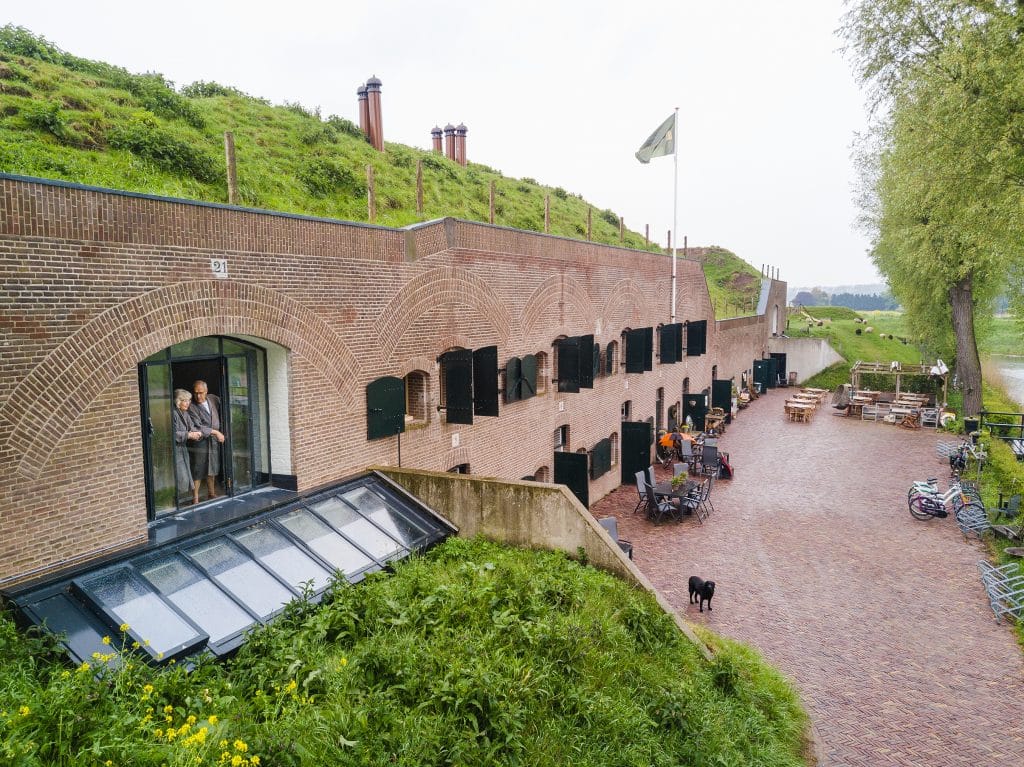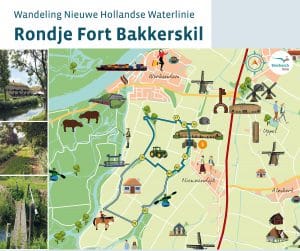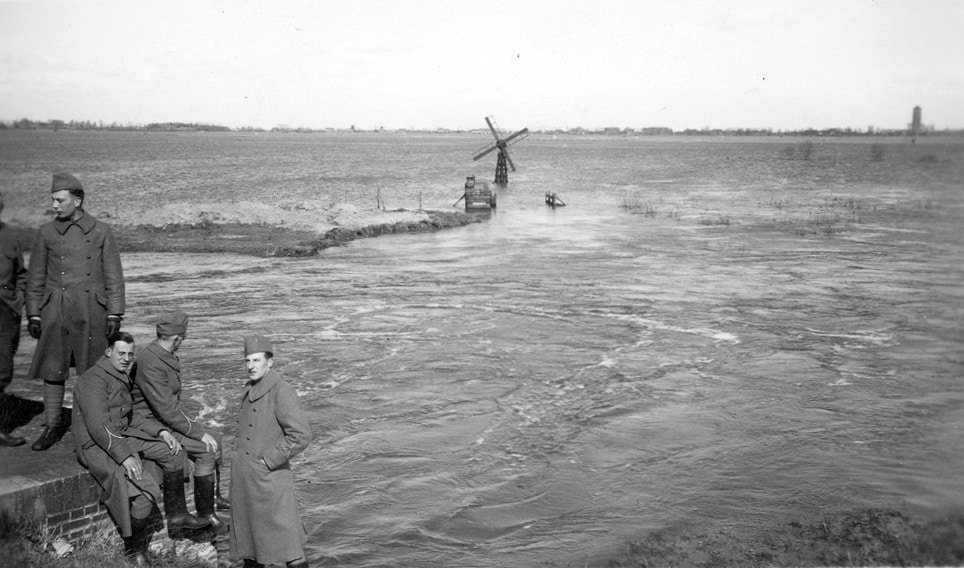Work on the Bakkerskil
After Papsluis was built in 1815, it was clear that it had to be guarded and defended. But before that defense was actually there, there were mostly many plans that were never carried out. There were plans for an artillery battery in 1816, a casemated dike post in 1825 and a fort in 1832. A field battery on the Bakkerskil was finally built in 1846, but the current Fort Bakkerskil dates only to 1879.
Fort Bakkerskil, or the Work on the Bakkerskil, is a small fort. It consists of only one two-story building. Consequently, it soon proved too small, as early as 1880 a wooden shed was added for artillery storage.



